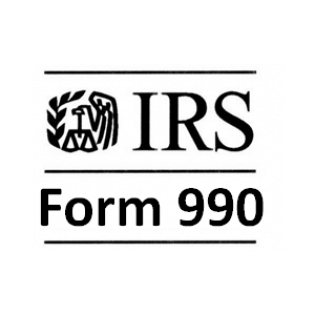Understanding Nonprofit Financials
To introduce students to the financial side of operating a nonprofit organization and to the financial reporting they are required to do for the IRS.
Students will:
- Learn how budgeting works in a nonprofit organization
- Understand and learn to read the IRS Form 990
- Learn about nonprofit fundraising (including sources of support, such as endowments and earned income)
Handouts: (1) Test your Financial Nonprofit IQ; (2) Nonprofit Budgets; (3) Planning a Nonprofit Budget worksheets; (4) Revenue and Expense worksheets; and (5) blank copies of IRS Form 990
Computers with Internet access (to visit the GuideStar website)
Snacks/candy (as a prize for the scavenger hunt)
If you are not already familiar with them, study the instructions for the Form 990 that nonprofit organizations (except religious places of worship) are required to complete and submit each year to the Internal Revenue Service. Then create your own free online account on GuideStar so you can explore and become familiar with the information in completed 990s for nonprofit organizations that interest you.
Do research using GuideStar and identify which nonprofit organization(s) you would like students to investigate during this lesson. These must be organizations that have uploaded completed Form 990s for recent tax years and whose forms have extensive information. Create questions about the finances of the nonprofit(s) that you will ask students to answer.
Download the handouts and answer sheet you will need for this lesson. [You may want to update the answers to the questions in “Test your Financial Nonprofit IQ” by doing research using the newest annual data from Giving USA and other sources.]
Philanthropy, nonprofit organization, programs, budgets, fundraising, sources of support, revenue, expenses, IRS Form 990
Instructions
Start the class with a short quiz of financial questions related to nonprofits (see handout, Test your Financial Nonprofit IQ). Go over the answers in class (available on the answers handout).
Describe for the class the Programs, Budgeting, Fundraising and Sources of Support for nonprofit organizations (using the handout, Nonprofit Budgets). Explain how a nonprofit budget is different from personal budgeting.
Planning a Nonprofit Budget Activity:
- Distribute an equivalent number of the different types of Planning a Nonprofit Budget worksheets (Anti-crime, Environment and Human Rights) to the class so that each student only has one type. Ask the students to separate into the groups based on their organization type.
- Each student will read the details about the budgets for their organization and complete the Revenue and Expense worksheets together as a group.
- Have a class discussion about the students’ thoughts and reactions to the activity. Discuss the similarities and differences for budgeting for your personal life and budgeting for a nonprofit organization.
Reading and understanding the IRS’ Form 990 required for (most) nonprofits:
- Lead students through the Internal Revenue Service’s Form 990 that must be completed by nonprofit organizations each year. Help students to understand the layout and details of the form and what goes into completing it. Also explain which nonprofit organizations need to complete and submit the form to the IRS and which do not (that is, churches and other places of religious worship).
- Have the students set up a free account at www.guidestar.org. Explain how GuideStar is a resource that helps people learn about the financial side of nonprofit organizations.
- Provide questions for students to answer about one or more real nonprofit organizations about which they will find information through GuideStar, particularly by analyzing their online 990s. Start the scavenger hunt for students and have them go through the Form 990 of the nonprofit(s) they access through GuideStar. Provide snacks along the way as you see/hear them find answers.
- Go over the students’ 990 answers and see how well they understand the details and wealth of information that can be found in a 990. Share with them that this skill of understanding the information in the Form 990s will come in handy when they review grant applications later in your course.
